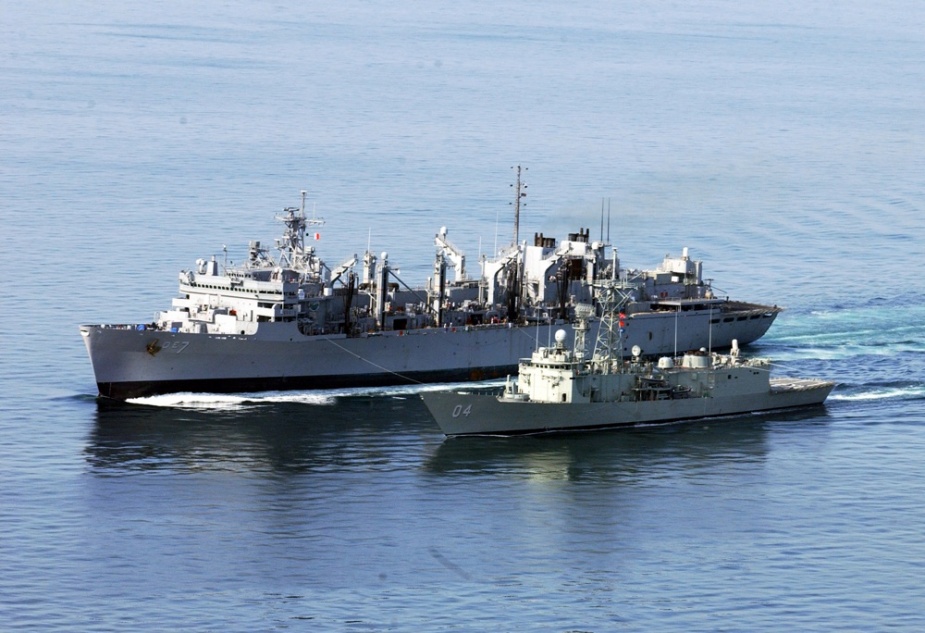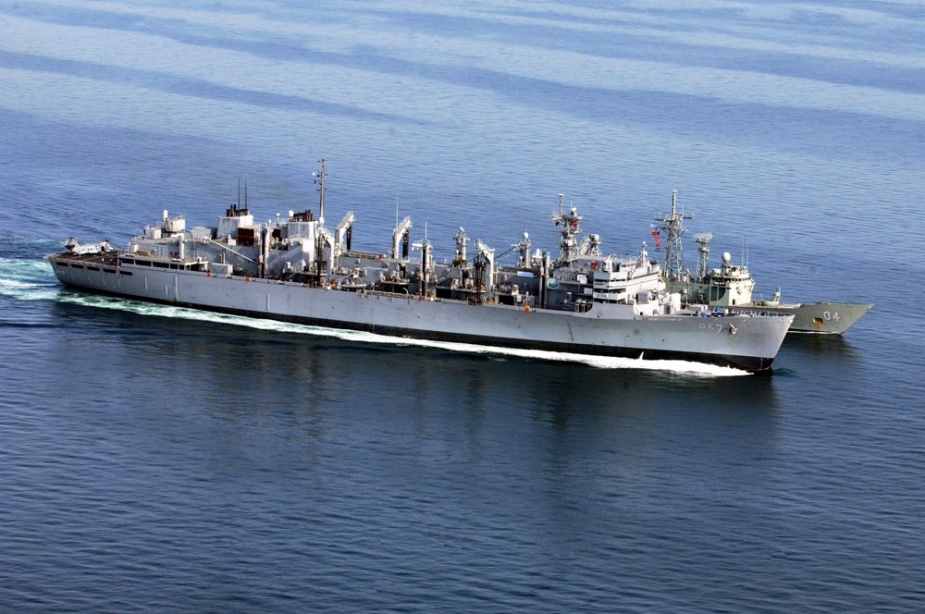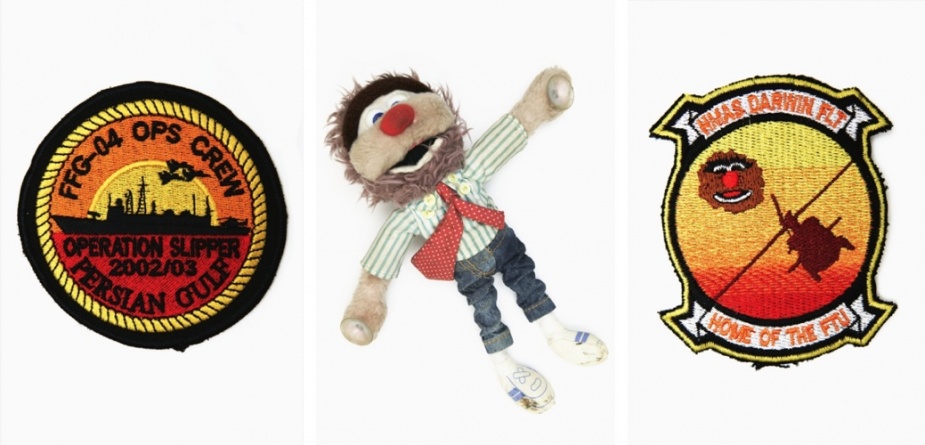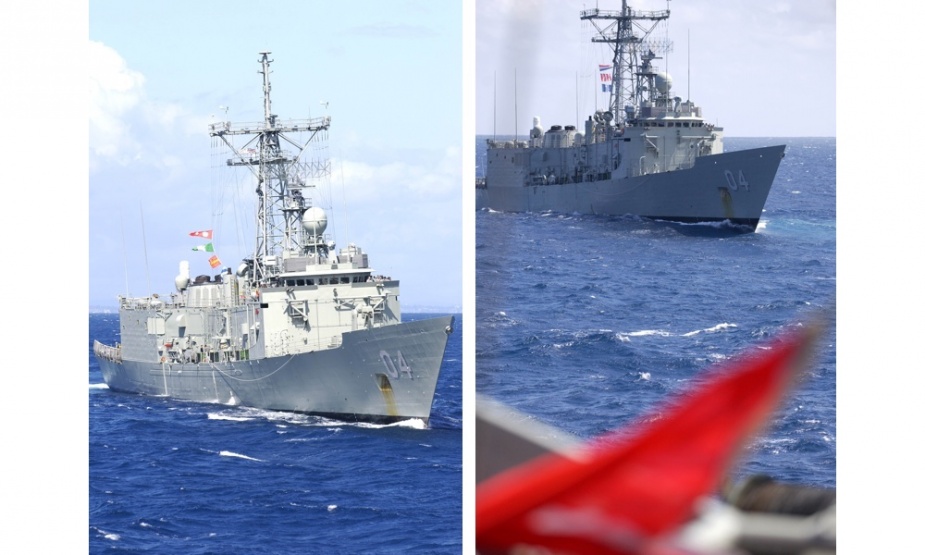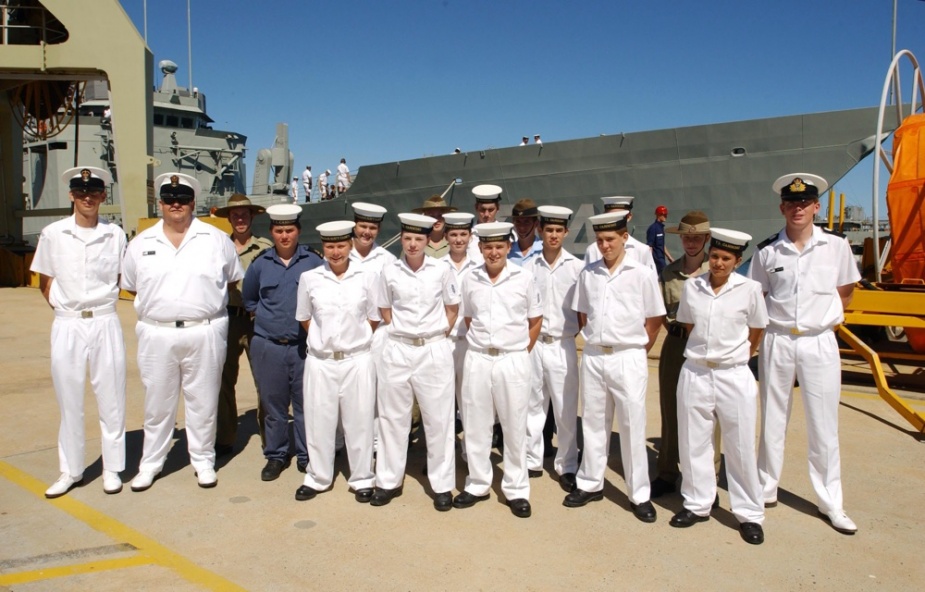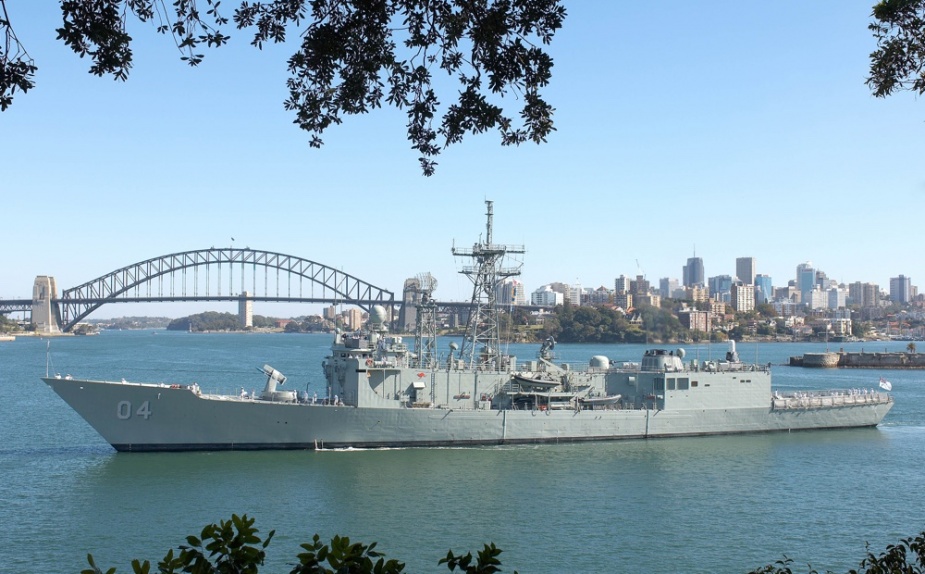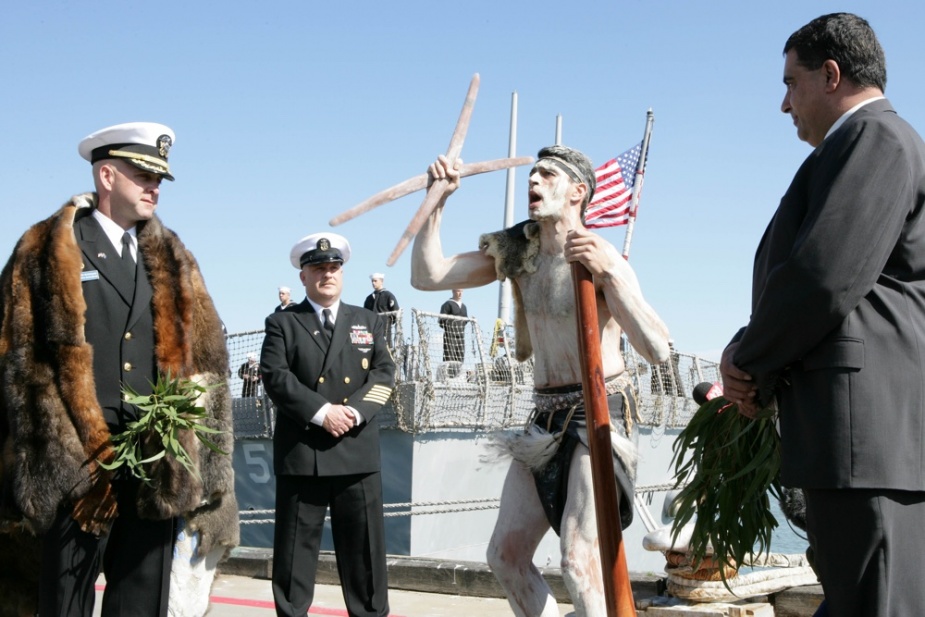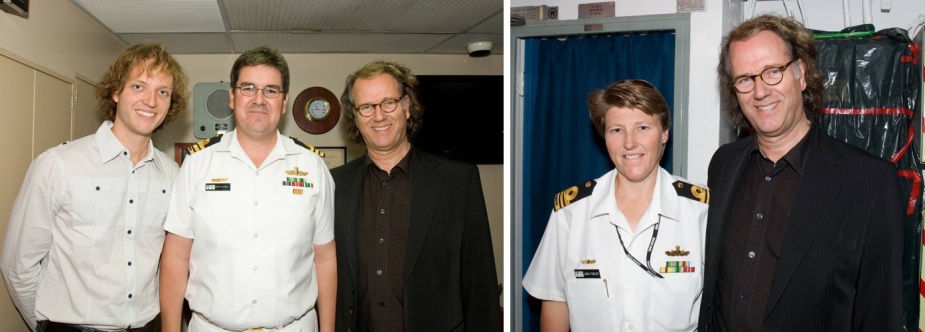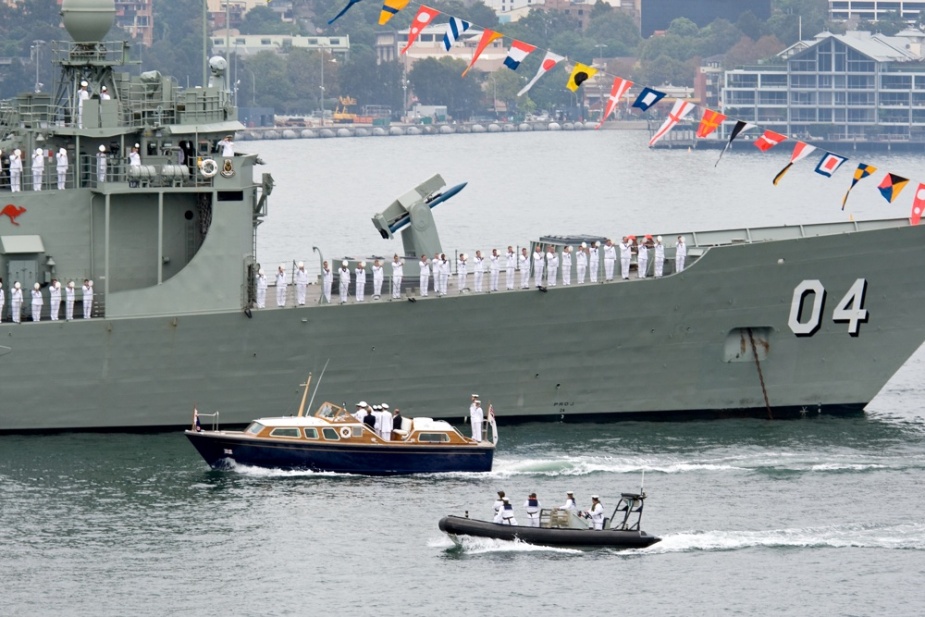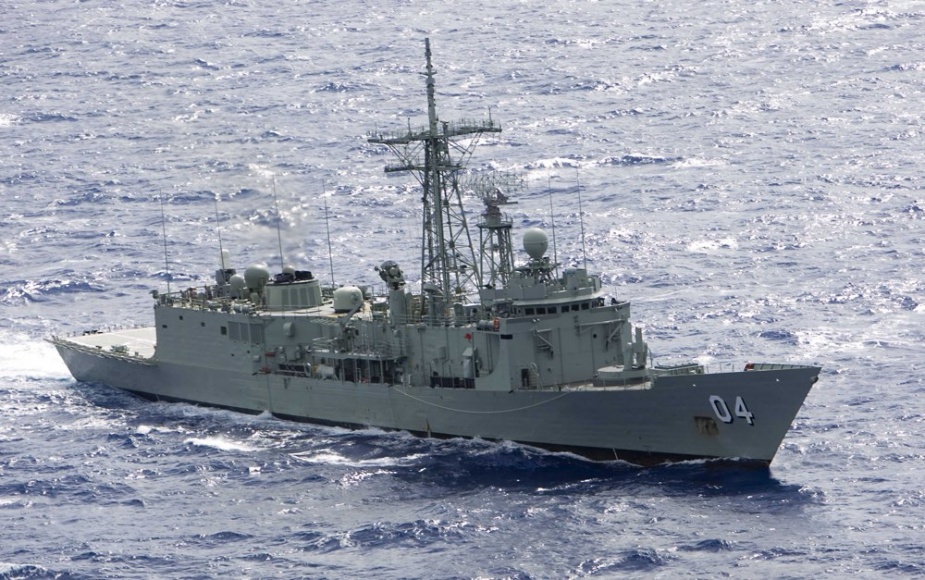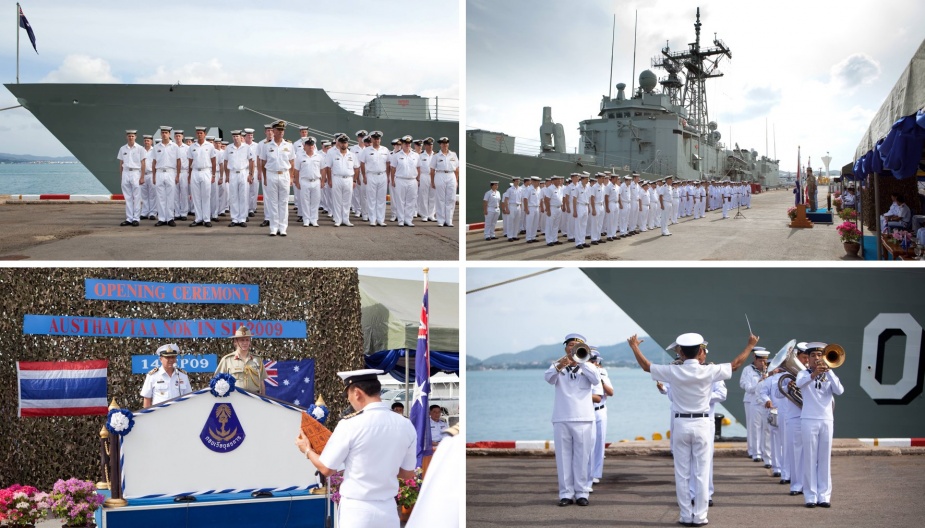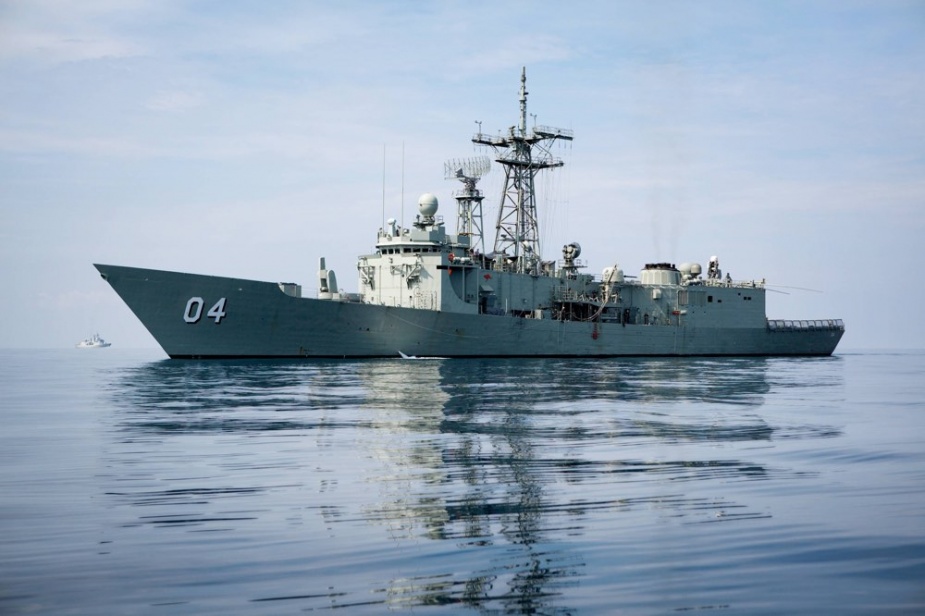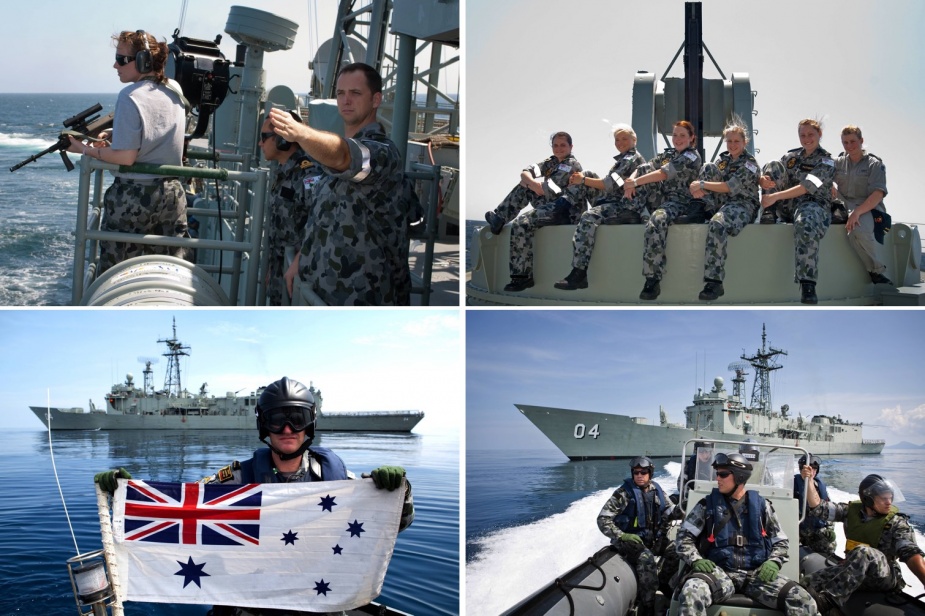HMAS Darwin - Part 3
| Class |
Adelaide Class |
|---|---|
| Type |
Guided Missile Frigate (FFG) |
| Pennant |
FFG 04 |
| International Callsign |
VKDA |
| Motto |
Resurgent |
| Builder |
Todd Pacific Shipyards Corporation, Seattle, Washington, USA |
| Laid Down |
3 July 1981 |
| Launched |
26 March 1982 |
| Launched by |
Mrs Joan Johnston, CStJ |
| Commissioned |
21 July 1984 |
| Decommissioned |
9 December 2017 |
| Dimensions & Displacement | |
| Displacement | 4267 tonnes |
| Length | 138.10 metres |
| Beam | 13.7 metres |
| Draught | 4.5 metres |
| Performance | |
| Speed | 29 knots |
| Range | 4500 nautical miles |
| Complement | |
| Crew | 200 |
| Propulsion | |
| Machinery |
|
| Horsepower | 40,000 |
| Armament | |
| Missiles |
|
| Guns |
|
| Torpedoes | 6 x Mk 32 (2 triple) torpedo tubes |
| Physical Countermeasures |
|
| Electronic Countermeasures |
|
| Radars |
|
| Sonars |
|
| Combat Data Systems | ADACS OE-2 SATCOM; Link 11. Link 16. |
| Weapon Control Systems |
|
| Awards | |
| Battle Honours | |

The new year saw Darwin taking part in the usual pattern of exercises, training and maintenance that follows a Christmas leave period.
She visited the east coast in February and March 2000 before proceeding to New Zealand to participate in the RNZN’s Fleet Concentration Period. She then returned to Sydney on 24 March and Stirling on the 31 March having conducted a further Operation ESTES patrol en route.
On 14 August Darwin left Fleet Base West to participate in Exercise SINGAROO before deploying to Asian waters at the end of the month. There she visited ports in Thailand where she took part in Exercise AUSTHAI, Hong Kong, the Republic of Korea, Japan where she took part in Exercise GOODWILLEX, and the Philippines. Passage exercises with naval units from the Republic of Korea were also conducted before she returned to Stirling, having assisted the Australian Customs Service with surveillance operations near Christmas Island, on 4 November.
2001
Darwin returned to Asian waters in February 2001 where she visited Singapore before proceeding on to Mumbai as Australia’s representative at the Indian Navy’s International Fleet Review celebrating India’s 50 years as a republic. The event was held over five days with the review itself being conducted on 17 February and involving 80 ships from 16 nations. She departed Mumbai on 20 February and conducted passage exercises with warships from South Africa, France, the USA and Kenya. She went on to visit Phuket, Lumut and Christmas Island, and returned to Stirling on 16 March.
April saw Darwin participate in the submarine escape and rescue Exercise BLACK CARILLON but her participation in Exercise TANDEM THRUST was cancelled when she received notification that she was to deploy to the Solomon Islands in support of Operation TREK, the ADF’s support for an International Peace Monitoring Team. En route she visited Melbourne for the city’s Centenary of Federation celebrations in May before continuing on to Jervis Bay and Sydney. On 10 May Darwin deployed from Sydney for the Solomon Islands arriving in the Area of Operations four days later and immediately commencing maritime security patrol operations. She was relieved by HMAS Kanimbla (II) on 15 June and arrived in Darwin on the 20th where the ship’s company exercised their right to Freedom of Entry two days later. She returned to Fleet Base West on 29 June where she entered a leave and maintenance period. Darwin finished the year undertaking post-refit trials.
2002
In February 2002 Darwin proceeded to Tasmania to participate in the Royal Hobart Regatta where she assumed duties as the Official Visit Ship after HMAS Melbourne (III) developed an engineering defect. On completion she joined exercises taking place off the east coast in preparation for assignment to Operation RELEX II. She returned to Stirling at the end of March before beginning RELEX operations in the vicinity of Christmas Island on 6 April with an Army Transit Security Element (TSE) embarked.
Tragedy struck Darwin on 4 May when, during a routine departmental muster, Leading Seaman Cameron Gurr was reported missing. A search of the frigate failed to locate him and a maritime search and rescue operation was quickly initiated. Over the ensuing six days the search was joined by HMAS Westralia (II), RAAF P3C patrol aircraft, Coastwatch DASH 8 surveillance aircraft, and Australian Federal Police and Australian Customs Service personnel. No trace of the missing sailor was found and the search and rescue operation was reluctantly ceased on 10 May. It was a sombre ship’s company that returned to Darwin at the end of the month where a memorial service was convened for their missing shipmate.
Darwin resumed RELEX II operations until 13 June when she was relieved by HMAS Adelaide (II) after which time she returned to Fleet Base West.
Operation SLIPPER Rotation IV
During deployment to the Persian Gulf from its home port at Garden Island, WA, HMAS Darwin’s Sonar Dome was holed and needed urgent repairs (reported as an urgent defect ‘URDEF'), which slowed down the ship’s arrival in the Operation SLIPPER area of operations in the Gulf. After several days of frustration regarding the defect and communications regarding the options for its repair, the Commanding Officer (CO), Commander Aaron Ingram, RAN was heard to say one morning “I’m going to my cabin to kick the ship’s cat!”. While emergency repairs were carried out at the port Fujairah, in the United Arab Emirates, Darwin’s Flight Commander, Lieutenant Commander Marc Pavillard, and Weapons Electrical and Engineering Officer, Lieutenant Commander Adam Gilbert purchased a large stuffed lion and presented it to the CO as the ship’s cat. Named ‘URDEF’, the lion wears his owner’s medal ribbons, and remained on board Darwin from November 2002 to December 2003 when Ingram was posted off the ship.
In August Darwin (Commander Aaron Ingram, CSC, RAN) began making preparations to return to the Middle East under the auspices of Operation SLIPPER. She departed Fleet Base West in company with HMAS Anzac (III) on 28 October and entered the MEAO on 10 November. Darwin and Anzac operated as Task Group 627.1 primarily close off-shore patrolling the Northern Arabian Gulf looking for smugglers and monitoring Iraqi naval activity, south east of the Al Faw Peninsula. These patrols saw them operate near the disputed boundary between Iraq and Iran, an area of heightened tension and one where smuggler traffic could be high leading to long periods of frenetic activity.
On 8 November 2002, the UNSC adopted Resolution 1441, affording Iraq a final opportunity to comply with its disarmament obligations, and three weeks later the United Nations Monitoring Verification and Inspection Commission resumed inspections. Meanwhile the Iraqi Navy resumed a pattern of PB-90 patrols. Multi-national Interception Force units, including Anzac and Darwin, shadowed the patrol boat operations as necessary, carefully watching to ensure that they posed no threat.
2003 - Operation BASTILLE
Operation BASTILLE, the pre-deployment of additional ADF assets to the MEAO in support of potential future operations began on 19 January 2003. It was designed to add to the pressure on the Iraqi regime, while ensuring that Australian forces were prepared should a diplomatic solution not be found. In 2003 HMAS Kanimbla joined Darwin and Anzac entering the MEAO on 15 February. The high operational tempo resulted in lengthening periods between port visits for Anzac and Darwin and sustainment issues placed additional pressure on the two ships.
On Australia Day 2003, members of Darwin’s ship's company played a cricket team from the US Naval Station at Bahrain. Another game was played against a local team from Jebel Ali in the United Arab Emirates. In this match, despite a gift from the opposing team of a hundred further runs, the Darwin team’s total of 85 runs was not enough to win the match.

As the diplomatic situation deteriorated, attempted breakouts by smugglers increased. By 13 March Darwin had conducted 300 boarding operations. Maritime activity reached its peak on 17 March, the day before the commencement of the Second Gulf War, when more than 50 cargo dhows exited the Khawr Abd Allah waterway that afternoon refusing to turn back. Darwin, with the intention of removing as many non-combatants as possible, as combat operations appeared imminent, assumed the duties of Scene of Action Commander and, with Anzac, HMS Marlborough, USS Chinook and USCG Ships Wrangell and Adak, coordinated the herding, anchoring, boarding, inspection and clearance of these vessels overnight. This marked the beginning of a mass exodus of vessels from the area over the next few days as the prospect of war loomed.
Operation FALCONER
Operation FALCONER, the Australian commitment to the 2003 Gulf War, began on 18 March 2003, and combat operations commenced on the night of 19-20 March. Darwin’s initial responsibilities continued to be the assembly, boarding and searching of vessels departing the area. She dispatched her embarked explosive ordnance disposal detachment to HMAS Kanimbla on 21 March following reports that Iraqi minelayers had been intercepted operating in the mouth of the Khawr Abd Allah. The following day she commenced patrol operations in the approaches to the waterway after confirmation that it had been cleared of civilian traffic, and provided force protection to Coalition vessels in Kuwaiti waters. Her responsibilities later changed to ensure that only legitimate fishing dhows and cargo vessels carrying humanitarian aid entered the Khawr Abd Allah.
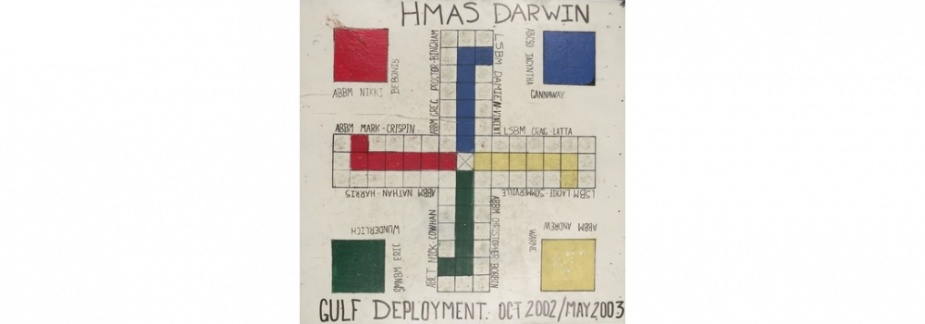
Darwin departed the patrol area on 19 April and, following a port visit to Jebel Ali, left the MEAO three days later. Darwin berthed at Victoria Quay, Fremantle, WA on 17 May, with HMAS Anzac, to a huge crowd of families and friends. She arrived back home at Stirling after a cold move from Fremantle on 19 May, via Port Victoria, Diego Garcia and Fremantle, and commenced a maintenance and leave period. More than 100 members of the ship’s company took part in a welcome home parade in Perth on 20 June.
Darwin returned to sea on 13 August to commence Operations RELEX II and CRANBERRY taskings in the vicinity of Christmas Island. She was relieved by HMAS Stuart (III) while alongside in Dampier before proceeding north for a circumnavigation of the mainland visiting Darwin, Lizard Island, Gladstone, Brisbane, Jervis Bay, Adelaide and Bunbury. She then participated in Exercise ASWEX before arriving back at Stirling on 21 November to begin refit preparations.
2004
Darwin returned to sea service on 18 June 2004 for post-refit training and trials. She proceeded to the east coast in August arriving in Sydney on 22 June to commence workup exercises during which notification was received that she was to undertake another deployment to the Middle East later in the year. The frigate visited Hobart en route back to Western Australia in October and arrived back at Stirling on the 16th where she continued deployment preparations. On 28 December Darwin departed Stirling, seeing in the New Year in the Indian Ocean while bound for the Middle East.
2005 - Operation SLIPPER Rotation X
After fuelling at Diego Garcia in the Indian Ocean, Darwin entered the MEAO on 9 January 2005. There she spent most of the deployment operating in the North Arabian Gulf carrying out maritime security patrols and interdiction operations around the Iraqi offshore oil platforms aimed at deterring smuggling and acts of piracy. She also provided logistical, chaplaincy and information systems support to the USN security detachments stationed on the oil platforms.
Darwin enjoyed a brief respite from operational duties when she supported Australian interests at the International Defence Exhibition 7 in Abu Dhabi in February. After resuming operations she eventually departed the MEAO on 11 June arriving back at Stirling on 28 June having conducted port visits to Mumbai and Diego Garcia en route. Once home, she commenced a leave and maintenance period.
A group representing Rockingham Senior High School and the Western Australian Education Department visited HMAS Stirling on 2 August 2005. Students went onboard Darwin as part of their visit and had the opportunity to speak with seagoing sailors.
Following a spell alongside at Fleet Base West Darwin returned to sea on 19 September for shakedown and workup exercises before joining Operation RELEX II patrols in October and November.
2006
Darwin continued RELEX II operations from January to March 2006. In April a decision was made to home port Darwin in Sydney and she left Stirling for the final time as a Western Australian based ship on 7 April. She arrived in Sydney on 21 April having visited Hobart during her eastward passage. It was not long before the frigate was again engaged in Operation RELEX II/ RESOLUTE patrols in July before visiting Asian waters where she participated in the Five Power Defence Arrangement Exercise BERSAMA PADU in September, and the Maritime Training Activity, Exercise LUMBAS, in October.
She arrived back in Sydney on 27 October where preparations began for her impending upgrade program. The program involved the extensive upgrade of four of the RAN’s Adelaide Class frigates which, in Darwin and Sydney’s cases, included an extension of their expected service lives.
2007
Darwin spent most of 2007 in the hands of the dockyard, returning to sea for just four days on 11 December 2007 to conduct a Mariner Skills Evaluation and a brief series of trials. Significant hull cracks were discovered during the refit, which required substantial repairs.
2008
Minor contractor work was undertaken in the New Year before Darwin departed Sydney on 10 March 2008 to commence sea trials of her new systems. The FFG Upgrade Program continued over the ensuing months as work continued to install, integrate and trial the new systems. These trials were interspersed with visits to Melbourne in March and Hobart in June.
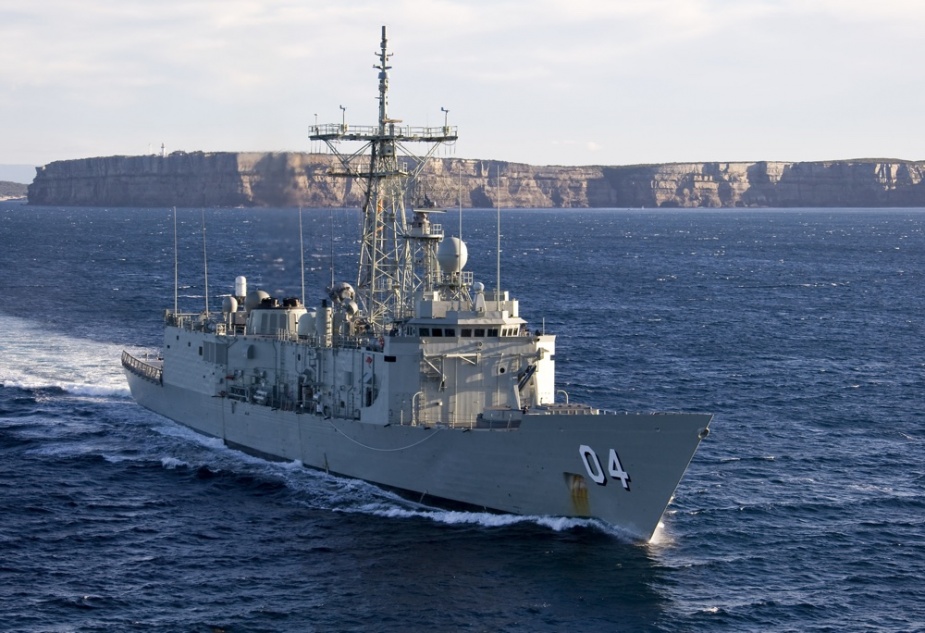
On 19 August Darwin rendezvoused with USS John S McCain. The following day she escorted the American destroyer into Sydney Harbour signalling the beginning of activities relating to the Centenary of the USN’s Great White Fleet visit to Australia in 1908. She later visited Melbourne and Albany in support of further Great White Fleet Centenary events in August and September. A visit to Fleet Base West was followed by port visits to Bunbury, Esperance, Adelaide and Eden before arriving back in Sydney on 24 October.
2009
During 2009 Darwin underwent other significant structural modifications. On 13 March she anchored south of Fort Denison to participate in a ceremonial Fleet Review and the following day, the ship’s company participated in a Freedom of Entry march through the City of Sydney. She returned to sea on 16 March to conduct a series of trials and evaluations, and visited Hobart in April to participate in Anzac Day commemorations before proceeding to Western Australian waters. There she underwent an emergency docking late in May to rectify an oil leak in the controllable pitch propeller hub before returning to Sydney in June for further defect rectification and to continue trials, evaluations and exercises.

Darwin participated in Exercise TALISMAN SABRE 09 in Queensland waters in July involving 16 ships and 24,000 Navy, Army, Air Force and Marine personnel from Australia, the USA and Canada.
On 7 August Darwin deployed to Asian waters arriving in Bitung, Indonesia, in company with HMAS Leeuwin for the Indonesian Fleet Review celebrating the 64th anniversary of the Republic of Indonesia. A detachment of the ship’s company participated in the Fleet Review Parade in Manado City on the 18th and the following day joined 31 other ships from 15 countries to conduct the fleet entry into Manado Bay. Darwin continued on to Lumut where she took part in Exercise MASTEX 09; Kuala Lumpur; Singapore; Sattahip where she participated in Exercise AUSTHAI 09; Sihanoukville; Ho Chi Minh City; and Singapore again where she took part in Exercise BERSAMA LIMA 09.
She returned to Stirling on 4 November in time to participate in Exercise ASWEX 09 and other in-company exercises in Western Australian waters before returning to Sydney on 4 December having visited six countries and participated in three multi-national exercises over the previous four months. Darwin hosted a reception on the wharf adjacent to the ship on 10 December celebrating her 25 years in commission.
Right: Able Seaman Combat Systems Operator (CSO) Chris King with his wife Seaman Combat Systems Operator Jayde King and their daughter Summer.



